Key takeaways:
- Selective mutism is an anxiety disorder that often manifests in social settings, where children may speak freely at home but become silent in public.
- Self-advocacy empowers individuals with selective mutism to communicate their needs and fosters confidence through small victories.
- Identifying personal challenges and triggers is essential for effective self-advocacy and adapting support strategies.
- Creating safe spaces for practice and seeking support from others are crucial in helping individuals build confidence and improve communication skills.
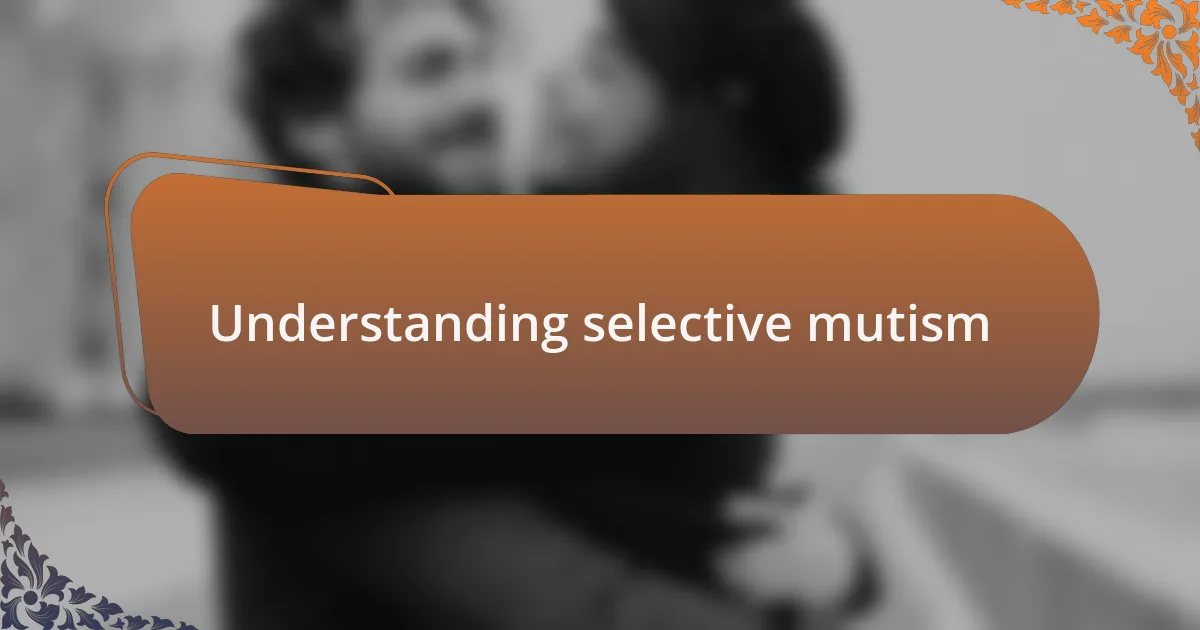
Understanding selective mutism
Selective mutism is more than just a reluctance to speak; it’s an anxiety disorder often rooted in a child’s fear of social situations. I still remember a time when I was in a group setting, and my heart raced at the thought of speaking up. It made me wonder, how can something so simple feel so overwhelmingly daunting?
This condition typically manifests in familiar settings, where a child might speak freely at home but become silent in public spaces, like classrooms. I recall witnessing a friend’s son struggle during a school presentation, completely frozen while his peers spoke with ease. It really hit me hard—what must have been going through his mind? The pressure of expectation can be immense.
Understanding selective mutism involves recognizing that it is not just shyness. It’s a unique interplay of anxiety and environmental factors. Reflecting on my own experiences, I often ponder whether the environments we create for our children are supportive enough to foster their voices. They deserve spaces where they can express themselves without fear of judgment, don’t you think?
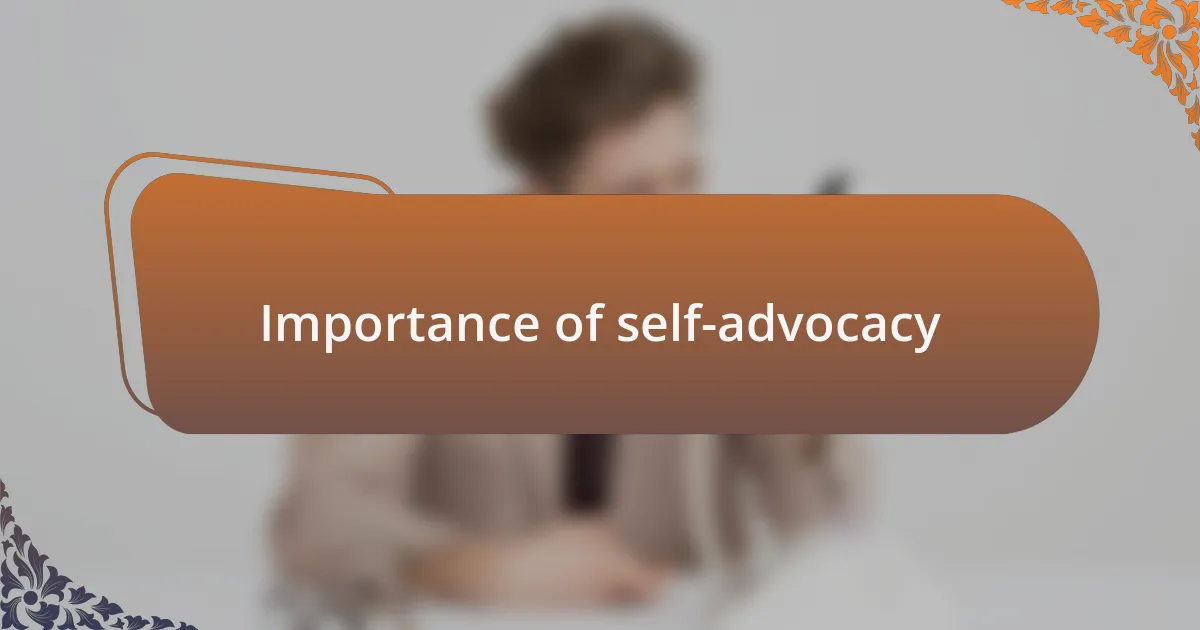
Importance of self-advocacy
Self-advocacy plays a crucial role in managing selective mutism, as it empowers individuals to communicate their needs and feelings. I remember a moment in my early career when I was working with a child who struggled to express discomfort in social settings. By encouraging him to voice his feelings, we discovered the importance of letting his teachers know that he needed extra time when responding in class.
When individuals with selective mutism learn to advocate for themselves, they give voice to their experiences, helping others understand their silent struggles. I think back to a parent meeting I attended where a mother bravely shared her child’s challenges. Her openness not only sparked a supportive discussion but also reminded everyone of the transformative power that advocacy can have—not just for the individual but for the entire community. How often do we think about the impact of simply speaking up?
The journey of self-advocacy fosters a sense of agency that is often absent in those experiencing select mutism. I’ve seen firsthand how one small victory in self-assertion can lead to greater confidence over time. Like when a young girl in therapy finally requested a break during a group activity—her small act of speaking up ignited changes in her interactions. Isn’t it inspiring how one step can lead to significant growth?
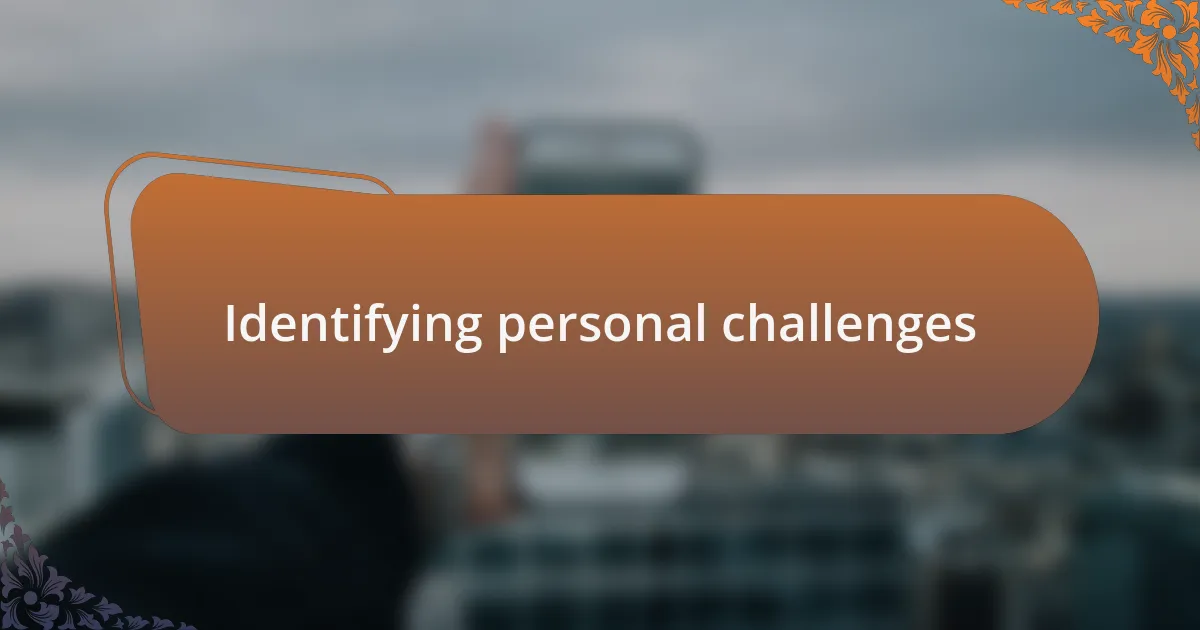
Identifying personal challenges
Recognizing personal challenges is the first step towards effective self-advocacy. For example, during my time working with a teen who had selective mutism, we often discussed her feelings in different environments. I recall her mentioning that crowded places made her feel completely overwhelmed, which was a pivotal realization. Have you ever noticed how certain situations heighten anxiety for you?
Understanding these specific triggers allows individuals to articulate their needs more effectively. I remember a parent who shared with me how her daughter would freeze up in class but felt more comfortable speaking in smaller groups. This insight opened a door to tailored support strategies, demonstrating how identifying personal challenges leads to meaningful adjustments in their environment. Doesn’t it make you think about how insightful even the smallest details about ourselves can be?
Reflecting on my own experiences, I’ve found that pinpointing challenges often feels like peeling back layers of an onion. Each layer reveals something new about what hinders communication. One of my students once shared that when he’s put on the spot in class, his anxiety spikes. Discussing this vulnerability in a safe space transformed his understanding of self-advocacy—he began to develop phrases he could use to express his needs. Isn’t it powerful how acknowledging these moments can pave the way for progress?
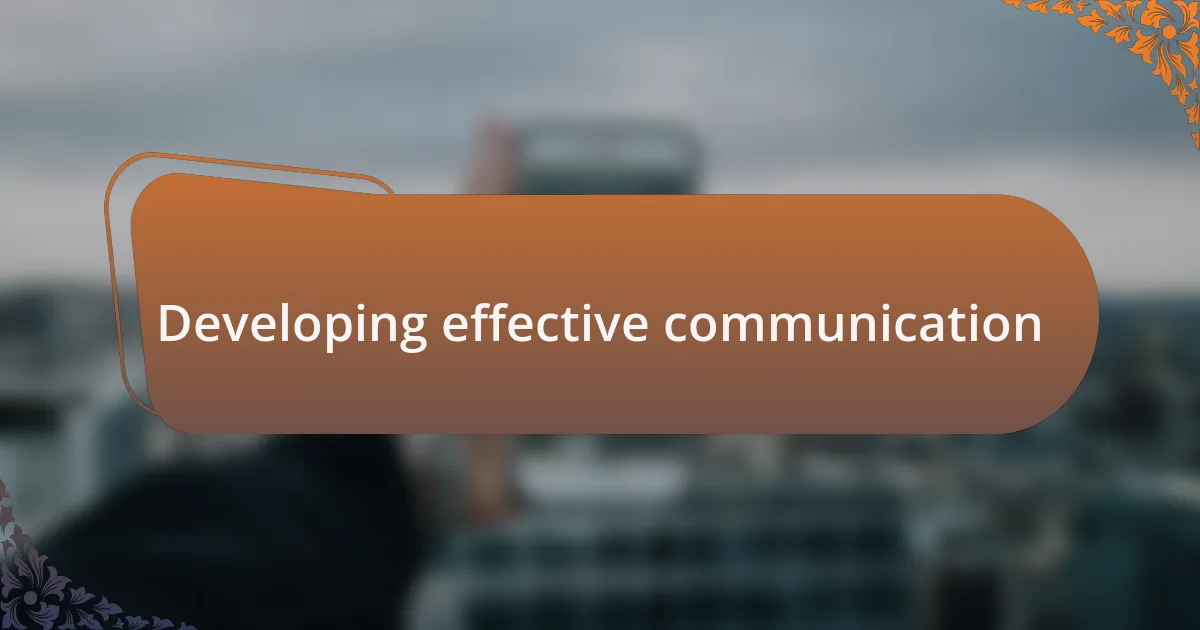
Developing effective communication
Developing effective communication is a gradual process that involves both practice and self-reflection. I remember a time when, during a calm one-on-one session, a child expressed her desire to share her thoughts but struggled to find the words. By using simple tools like visual aids or writing prompts, we began to explore her feelings together. Have you ever tried to communicate your thoughts in a way that genuinely connects with your audience?
Every conversation is an opportunity to enhance communication skills. A young girl I worked with used to write notes to her friends instead of speaking, and this practice built her confidence over time. We gradually introduced short, spontaneous conversations about topics she enjoyed. It was fascinating to see how those small exchanges began to chip away at her anxiety. Can you think of a time when a little encouragement made all the difference in how you expressed yourself?
Practicing communication actively is crucial. I often encourage individuals to role-play different scenarios that might feel challenging. For example, a young boy and I pretended to be in a classroom setting where he could practice asking questions. Through this exercise, he discovered his voice and realized that it was safe to speak up. Isn’t it amazing how stepping into scenarios can shed light on our own capabilities?
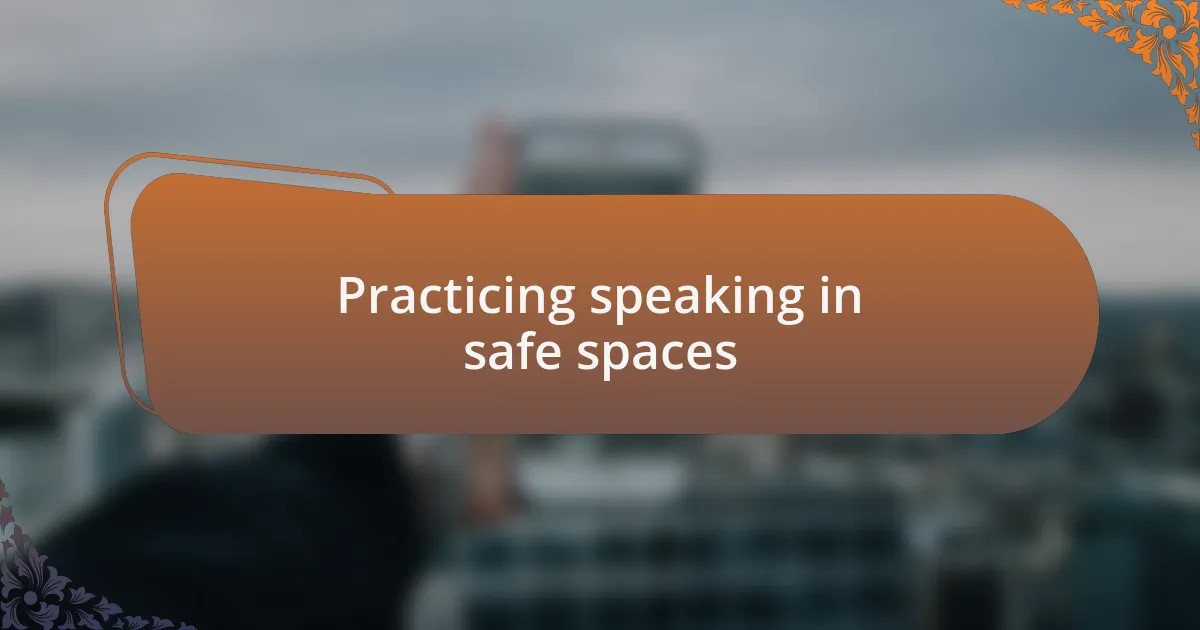
Practicing speaking in safe spaces
Creating safe spaces for speaking can significantly ease the pressure many experience with communication. I recall working with a young woman who found solace in small group settings with friends who shared similar experiences. Together, they created a comfortable atmosphere where they could express their thoughts without the fear of being judged. Have you ever noticed how the right environment can change the way you feel about speaking?
In my experience, making practice a routine in a safe environment can foster genuine growth. One of my clients began by practicing conversational skills with her family during game nights, where the stakes felt low and the laughter was plentiful. As she voiced her thoughts about her favorite games, her confidence began to bloom. Isn’t it remarkable what a little play can do for our communication skills?
I often emphasize the importance of gentle encouragement when practicing speaking. I remember when a child in my group hesitated to share during storytelling sessions. By simply offering a quiet nod or a smile, I could see her hesitation slowly melt away. This taught me that support in safe spaces is essential for those struggling to find their voice. How much more open might we be if we embraced those small affirmations?
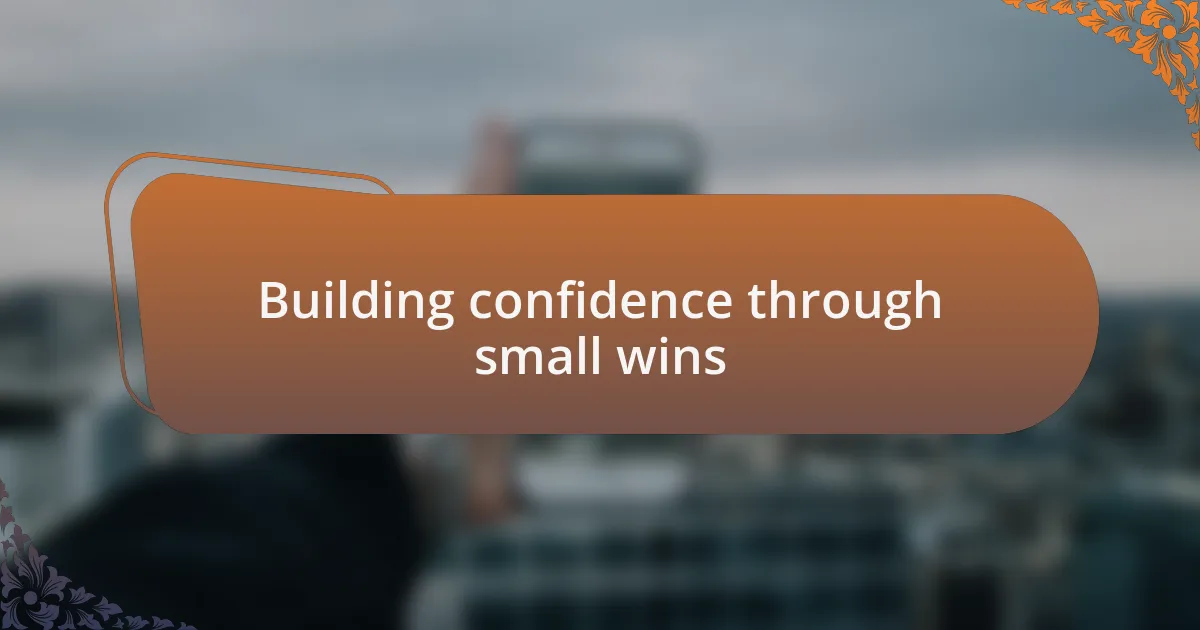
Building confidence through small wins
Building confidence through small wins can often feel like a gradual journey, but each little success paved is a step toward greater self-advocacy. I recall a moment when a young boy in my program finally spoke up during a class discussion. It wasn’t a grand speech—just a simple contribution about his favorite book—but the look on his face showed that it meant the world to him. Have you ever seen how a single positive experience can ignite a spark of confidence?
I also remember a time when a quiet teenager volunteered to present a project she worked hard on. Initially, her voice trembled, but with each word, I could see her belief in herself strengthen. As she received positive feedback from her classmates, her eyes lit up, illustrating that those seemingly small victories can dramatically change someone’s outlook. Can you imagine the power of just one moment of acknowledgment?
Each small win nurtures a sense of accomplishment, encouraging individuals to take on new challenges. I once worked with a girl who began by ordering her own meal at a restaurant after weeks of encouragement. That simple act led her to participate more actively in her class discussions. Isn’t it amazing how a tiny victory can build a foundation for future success?
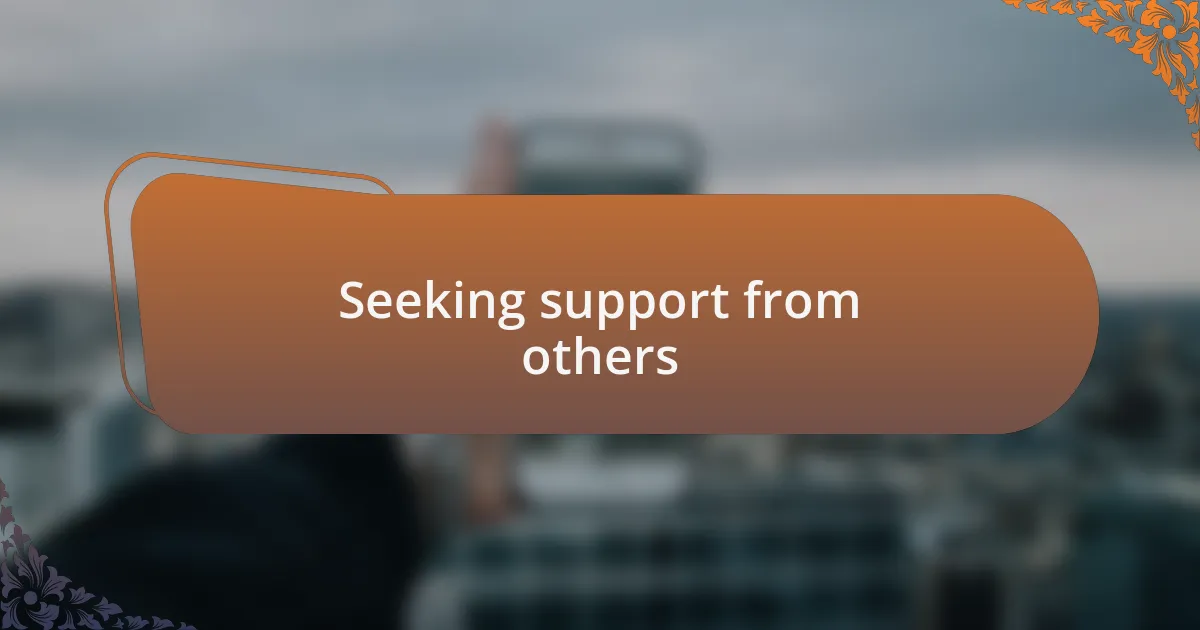
Seeking support from others
Seeking support from others is a crucial step in navigating the challenges of selective mutism. I recall how a friend reached out to me when I was struggling to express my needs in a group setting. Just hearing her encouragement made a difference; it reminded me I wasn’t alone. Have you ever felt that sense of relief when someone truly understands your struggle?
Connecting with people who share similar experiences can be incredibly empowering. I once joined a support group where I found peers who faced similar hurdles. It was inspiring to hear their stories and realize that our journeys, while unique, had common threads. Isn’t it comforting to know that support is just a conversation away?
In those moments of vulnerability, it’s essential to seek out those who can lend an understanding ear. I remember opening up to a mentor who patiently guided me through my feelings of isolation. Her insights not only helped me articulate my thoughts better but also reinforced the notion that seeking support is a sign of strength, not weakness. Wouldn’t it be fantastic if more people understood that?